First, it’s not “Mel’-born” or “Mel’-burn,” it’s “Mel’-bn.” It sounds like you might be saying “Melvin.” BTW, we also figured out that “eye’-deen” means “eighteen.”
It was hot in Melbourne today. Tomorrow’s forecast high is 68 degrees–quite a change. In Melbourne, the weather adage is “We can have four seasons in a day.”

Because of the heat, three outdoor excursions were cancelled by the tour operators, including ours. We expected a nine-hour day beginning with a ride on a vintage narrow-gauge train through the mountains to a winery for lunch and wine tasting. After lunch, we’d continue on the train across the Great Dividing Range and stop at a wildlife sanctuary with 200+ species of native wildlife in a natural bush setting. Instead, we got a refund and had a five-hour tour of “Melbourne by land and by water,” which meant a city bus tour and a river cruise. It was disappointing, but at least we saw something in the area.
We lucked out because most of the morning was cloudy, so the heat wasn’t unbearable. Shortly after lunch, however, the sun burned off the clouds and the temperature skyrocketed. At that point, it was obvious that cancelling the outdoor excursions was a good move. Like the Southwest U.S., Melbourne has a dry heat, but 107 degrees under a burning sun is still mighty hot.
Melbourne, the capital city of Victoria, was built on gold mining and is the wealthiest city in Australia. It has also been called the world’s most livable city. It’s very clean and has great public transportation, a thriving economy, and lots of recreational green space. The Yarra River flows through the city and there’s a “bike track” on both sides along its entire length. In places, it’s such pretty parkland that you could forget you’re biking in the city. Spanning the river is a pedestrian bridge decorated for Christmas.
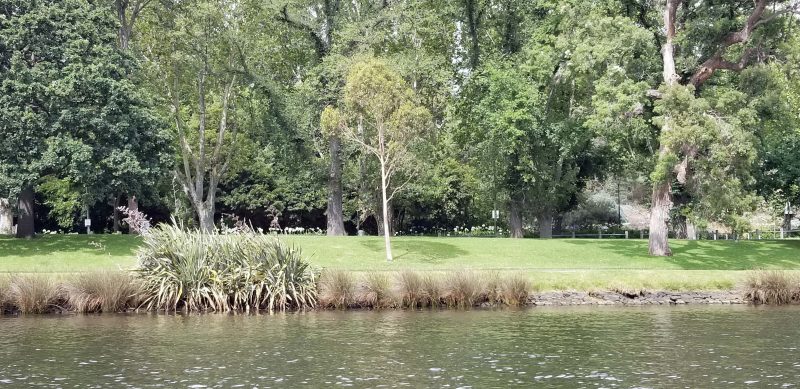


The building in the picture below is the Memorial of Remembrance. It was built to honor all those from Victoria who served in wars since the Boer War in Africa in 1899.
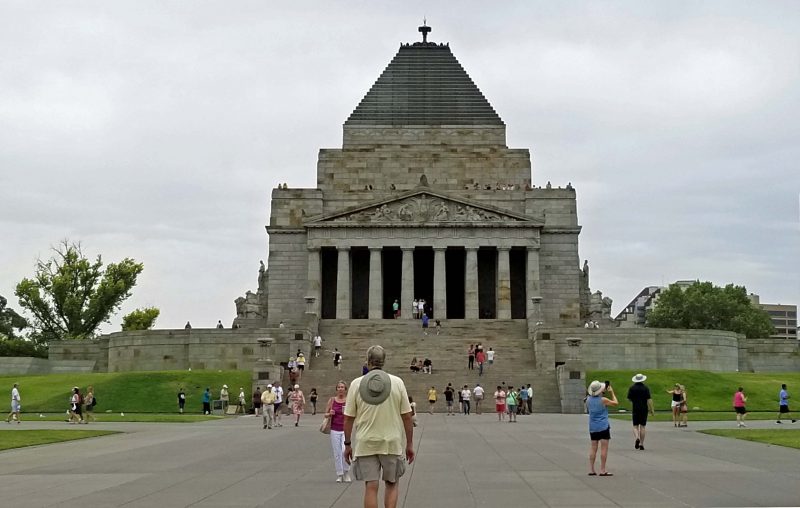
Two high-rise buildings mark the city’s skyline. The building on the left is not quite finished. It was supposed to be 108 stories tall, making it the tallest building in Australia, but at some point, people who know this kind of thing realized that 108 stories would cast a shadow on the Memorial of Remembrance, so construction stopped at 102 stories. The building is now known as “the 102.”
The building on the right has a red stripe on its side (beginning in the yellow area near the top of the building). This red stripe also pays homage to all the soldiers from Victoria who have fought and died in wars.
To the right of the tall buildings is a narrow white structure. It was a gift to Melbourne from France and is called the little Eiffel Tower.
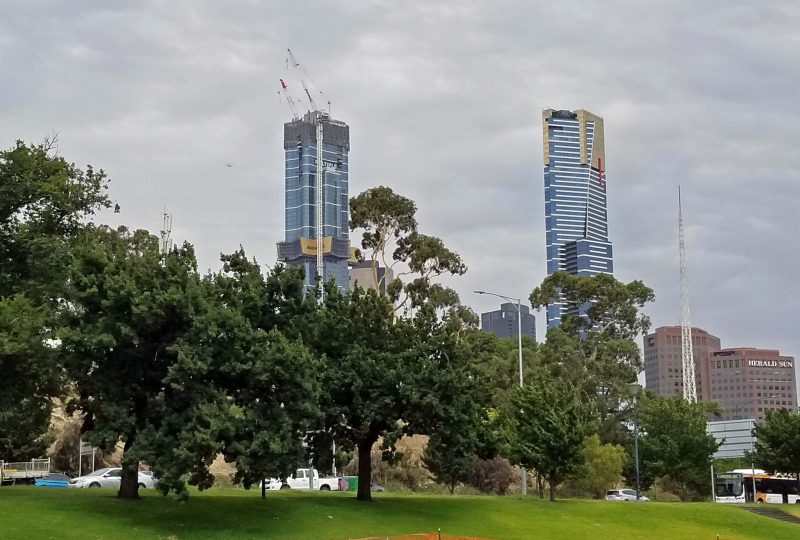
Our final stop was the city’s Fitzroy Gardens, a 64-acre slice of England in Australia. Within the garden is a building known as Captain Cook’s house. The bricks and building materials were shipped from England in barrels and the house was constructed in Melbourne. Captain Cook never lived in it.
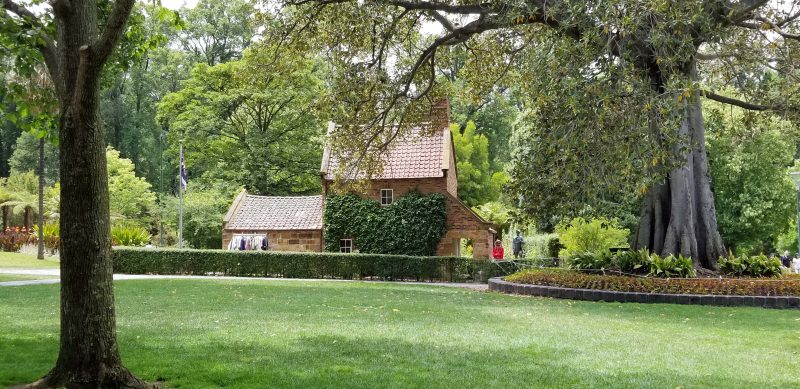
There were a lot of pretty scenes in the park and also a miniature Tudor village and an interesting tree called the Fairy Tree.

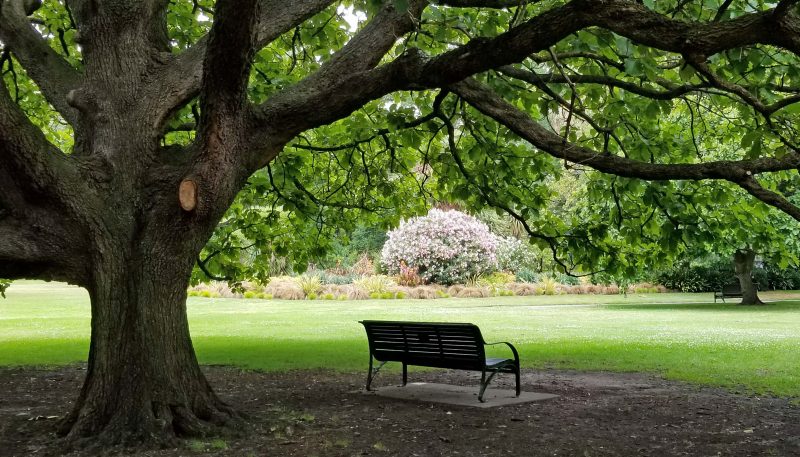
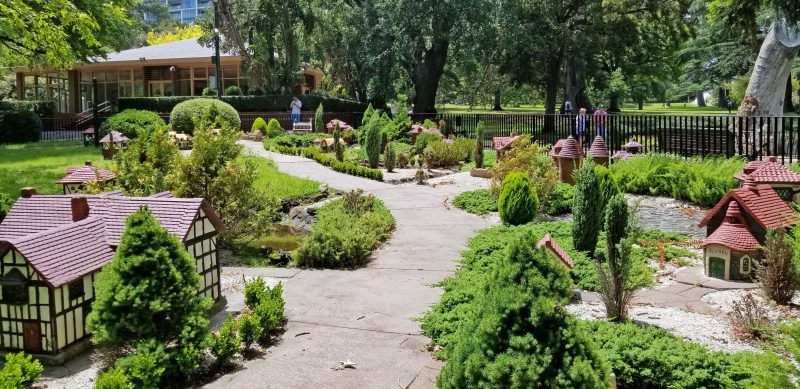
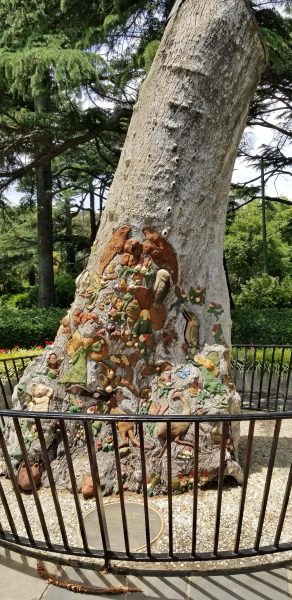
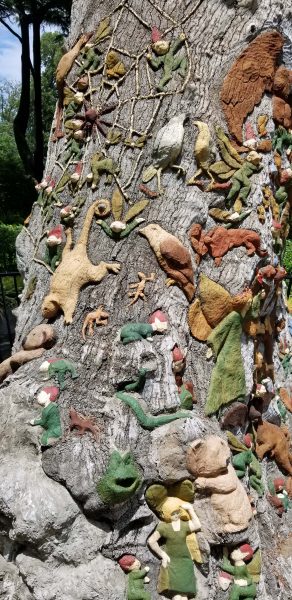
As we were walking, riding, and sailing through Melbourne, I saw some oddly interesting things. If you live above Goody’s Burger House and don’t have a yard, put your inflatable Christmas decorations on the balcony.
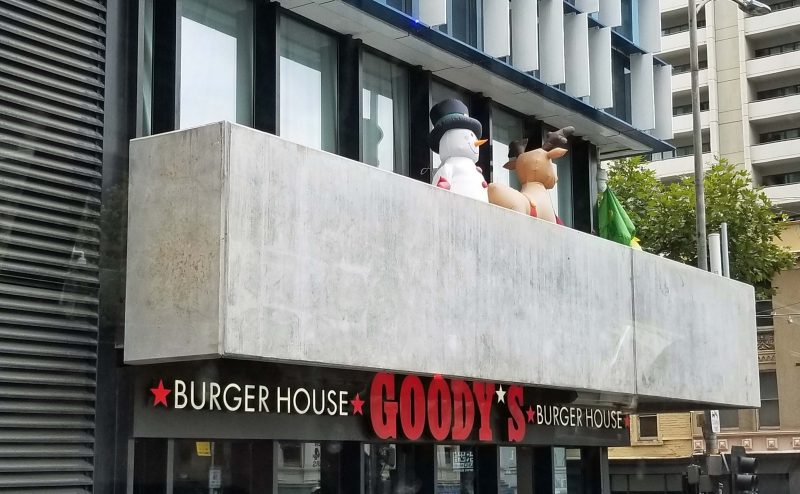
The Travelodge hotel had a large golden bee on its roof (referring to the city’s wealth from gold) and another crawling up an exterior wall.

The Finders (short i) Street train station–which is huge–has lots of clocks on its front. Since digital time is so popular now, none of these clocks works.
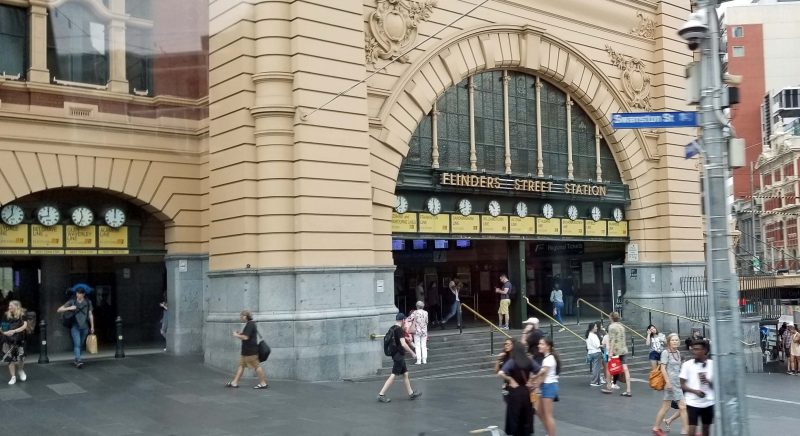
I saw more than one of this style of sculpture around the city. I can’t even guess at the artist’s message.
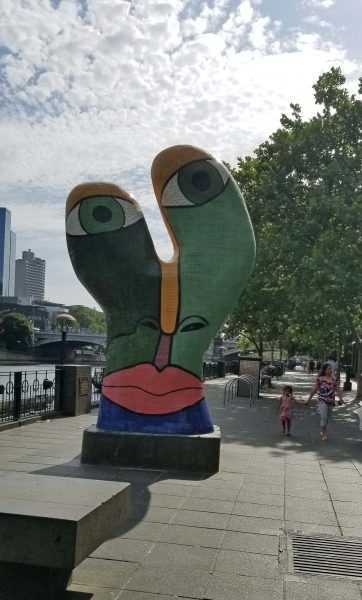
Back in our stateroom, we looked into the adjoining harbor. The blue and white ship must be very tall, because it looks like it’s resting on land.
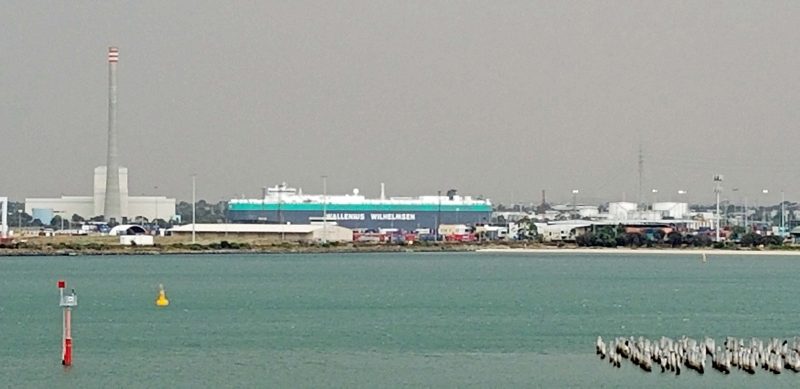
After our tour and a late lunch, Ted went somewhere on the ship for coffee and I went to what’s called the living room, to read my book for awhile. There weren’t many people there, it was quiet, and there was some soft music playing. Lovely. And cool.
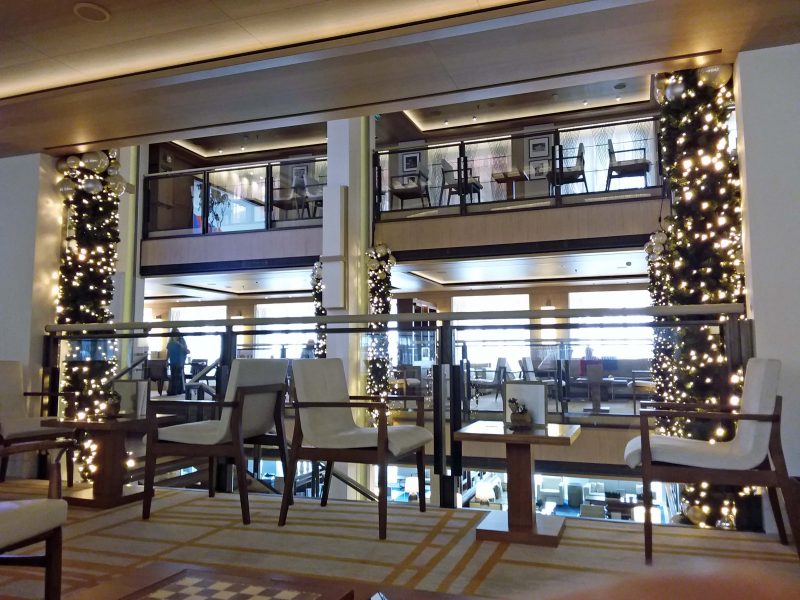
After dinner, we went to the ship’s theater for a presentation by the Gertrude Opera Company, a small private group from Melbourne. The narrator was very amusing, and told us he’d take us through 400 years of opera in 45 minutes. He did. I found it interesting that opera is the most enduring form of musical entertainment, that it was very popular in the western frontier states in the U.S., and that it is, indeed, the basis of soap opera. He referred to Giuseppe Verdi as “actually, George Green,” and pointed out how many operas have been used in advertising and even in Bugs Bunny cartoons, e.g., “The Marriage of Figaro” and “The Barber of Seville.” Opera can be fun.